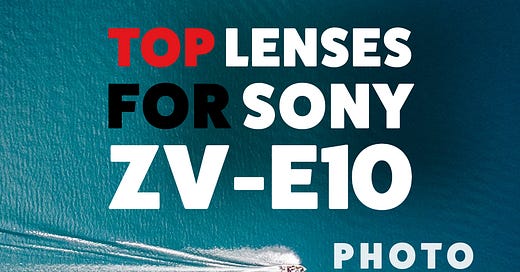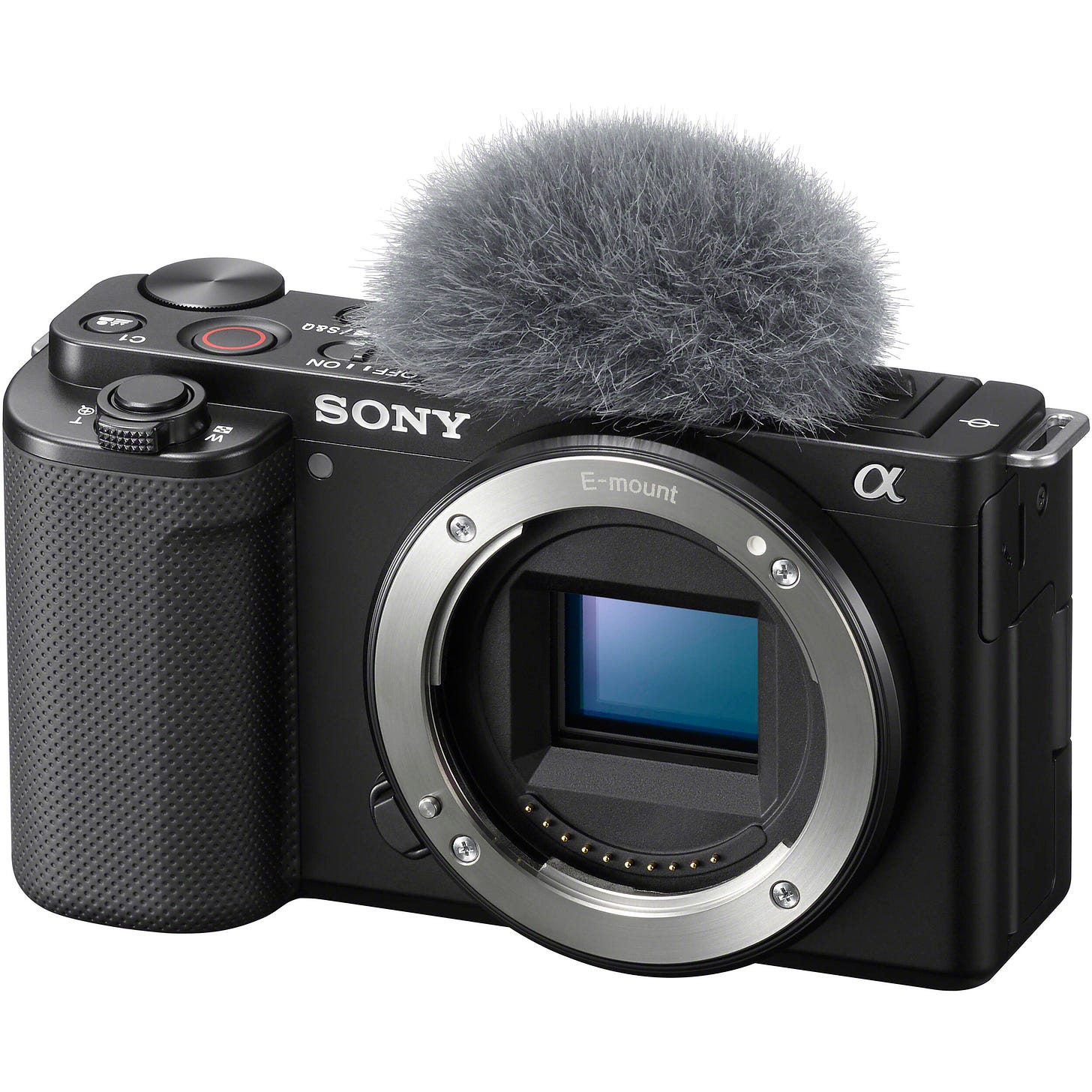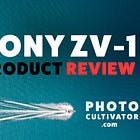The Best Lenses for Your Sony ZV-E10 Camera
The Sony ZV-E10 is a popular mirrorless camera that has become a favorite for all vloggers and content creators.
Here are a few lenses that will improve your photography and video experience with this powerful camera:
Landscape Photography Lenses
For capturing beautiful landscapes, two great budget-friendly lens options are:
Sigma 16mm f/1.4 - This ultra-wide angle prime lens provides an excellent field of view for landscapes and astrophotography.
Sony 10-18mm f/4 - A versatile ultra-wide zoom lens that covers a wide range of focal lengths suitable for landscapes.
If you're willing to invest in a more premium landscape lens, the Sony 12-24mm f/2.8 G is an excellent ultra-wide zoom that offers superior image quality and a constant f/2.8 aperture.
Street Photography Lenses
When it comes to street photography, these lenses are worth considering:
Sigma 30mm f/1.4 - A fast prime lens with a natural field of view on the ZV-E10's APS-C sensor. Great for street and environmental portraits.
Sony 20mm f/2.8 - A compact and lightweight ultra-wide prime lens that provides a unique perspective for street shots.
Viltrox 23mm f/1.4 - An affordable manual focus prime with a bright f/1.4 aperture, ideal for low-light street photography.
For a higher-end street photography option, the Sony 24mm f/1.4 G Master is an exceptional prime lens with amazing image quality and a fast aperture.
Video/Vlogging Lenses
For video and vlogging, the following lenses are highly recommended:
Sony 18-105mm f/4 - A versatile power zoom lens with a useful zoom range and constant f/4 aperture, making it a great all-around choice for video.
Sigma 16mm f/1.4 or Sony 20mm f/1.8 - Both ultra-wide prime lenses are excellent options for vlogging on the ZV-E10.
If you're looking to invest in a premium video lens, the Sony 16-35mm f/2.8 G Master is a top-of-the-line wide-angle zoom that delivers exceptional performance.
Color Performance and Limitations
While the Sony ZV-E10 is a capable camera, it's important to understand its color performance and limitations, especially for video work:
Limited Color Depth
As an 8-bit camera, the ZV-E10 may exhibit visible color banding or posterization, particularly when shooting in log picture profiles like S-Log2 and S-Log3.
This is due to the camera's restricted color depth compared to higher-end 10-bit models.
Noise in Shadows with Log Profiles
Using log gamma curves like S-Log2 and S-Log3 can amplify noise in the shadow areas of your footage.
This trade-off for increased dynamic range is something to consider when using these profiles.
Restricted Color Spaces
The ZV-E10 only supports the sRGB and AdobeRGB color spaces, lacking wider gamuts like S-Gamut that can take full advantage of log profiles during color grading.
I’d therefore recommend careful exposure technique and color grading to minimize these issues and maximize image quality when shooting video with the ZV-E10.
Using a Lens Adapter with the Sony ZV-E10
If you're looking to get a wider field of view on your Sony ZV-E10 but don't have the budget for a new lens, a lens adapter could be a great solution.
One popular option is the Neewer 0.75x wide-angle lens adapter.
This adapter attaches to the front of your existing lens and provides a wider 0.75x magnification.
The Neewer LS-30 40.5mm HD Wide Angle Lens is compatible with the Sony ZV-E10.
Other Neewer wide-angle adapters, like the 18mm version, also work with similar Sony cameras like the ZV-1.
Lens adapters are designed to act as additional lenses, rather than replacing the existing one. This means the camera's own zoom controls should continue to function as normal.
ZV-E10 vs ZV-E1 - When to Choose Which
The Sony ZV-E10 and ZV-E1 are both excellent cameras for vlogging and video content creation, but they cater to different users and budgets.
Go for the Sony ZV-E10 if:
You are a beginner or have a limited budget (ZV-E10 costs around $700 vs $2,200 for ZV-E1)
You prioritize portability and a lightweight form factor (ZV-E10 is smaller and lighter at 343g vs 483g)
You want higher resolution photos (24.2MP on ZV-E10 vs 12.1MP on ZV-E1)
You don't need advanced video features like 4K 60fps, 10-bit recording, etc.
Go for the Sony ZV-E1 if:
You are a professional vlogger/content creator willing to invest in top-tier video quality
You require advanced video specs like 4K 60fps, 10-bit 4:2:2 recording, and higher bitrates
You need superior autofocus performance, subject tracking, and low-light capabilities
You want in-body image stabilization (IBIS). ZV-E10 does not have it.
You can take advantage of the full-frame sensor's improved dynamic range and low-light performance
While the ZV-E1 is a more capable camera, the ZV-E10 offers an excellent value proposition for beginners or those on tighter budgets.
Consider your experience level, video requirements, and financial constraints when deciding between the two.
And That’s It
The Sigma 16mm f/1.4 and Sigma 30mm f/1.4 lenses are very popular choices on a budget that cover wide angles for landscapes and a natural field of view for street photography respectively.
The Sony power zoom and compact prime lenses are also great affordable options for video work on the ZV-E10.
I hope that helps.
-Hakan.





